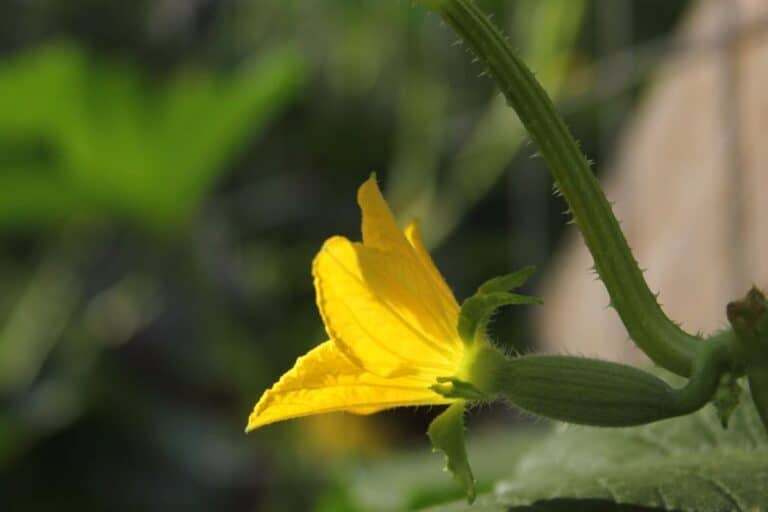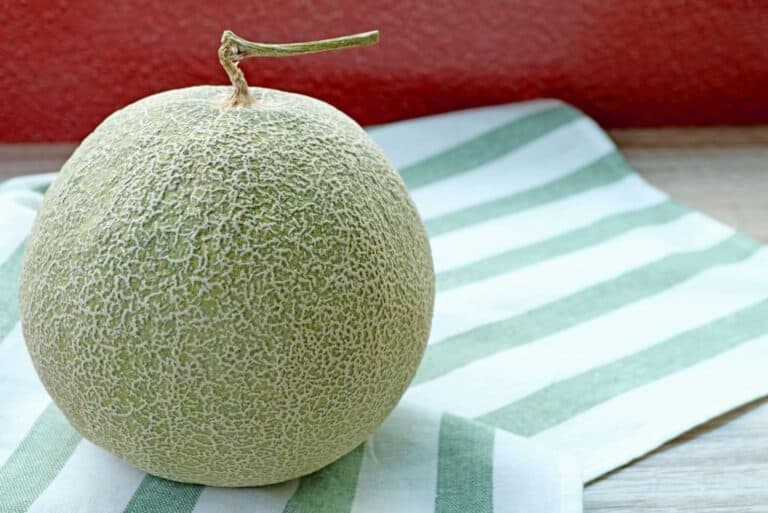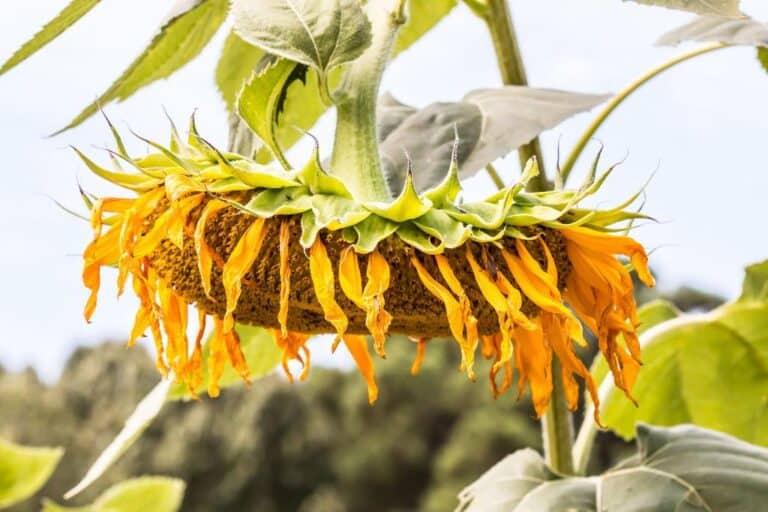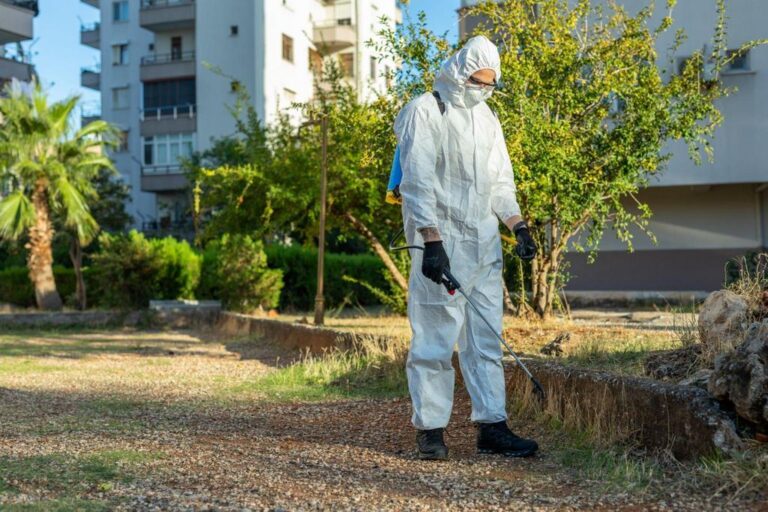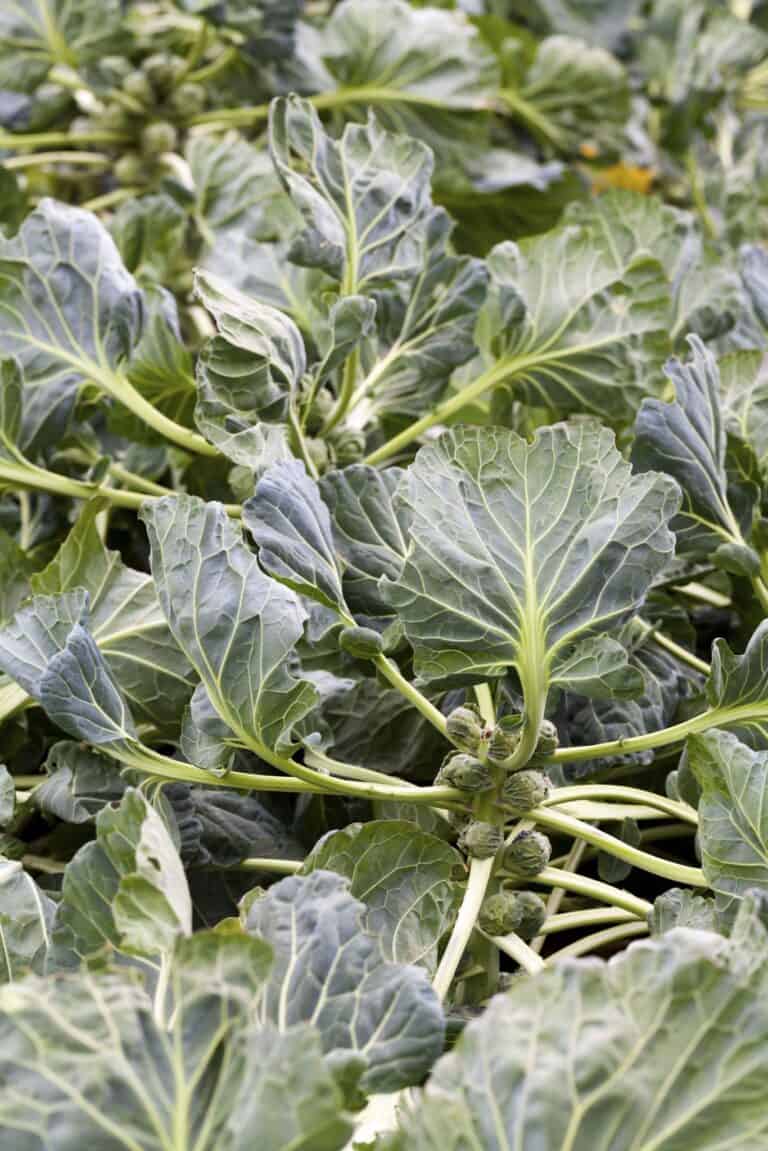Why Are My Cantaloupe Flowers Falling Off? (Causes and Solutions)
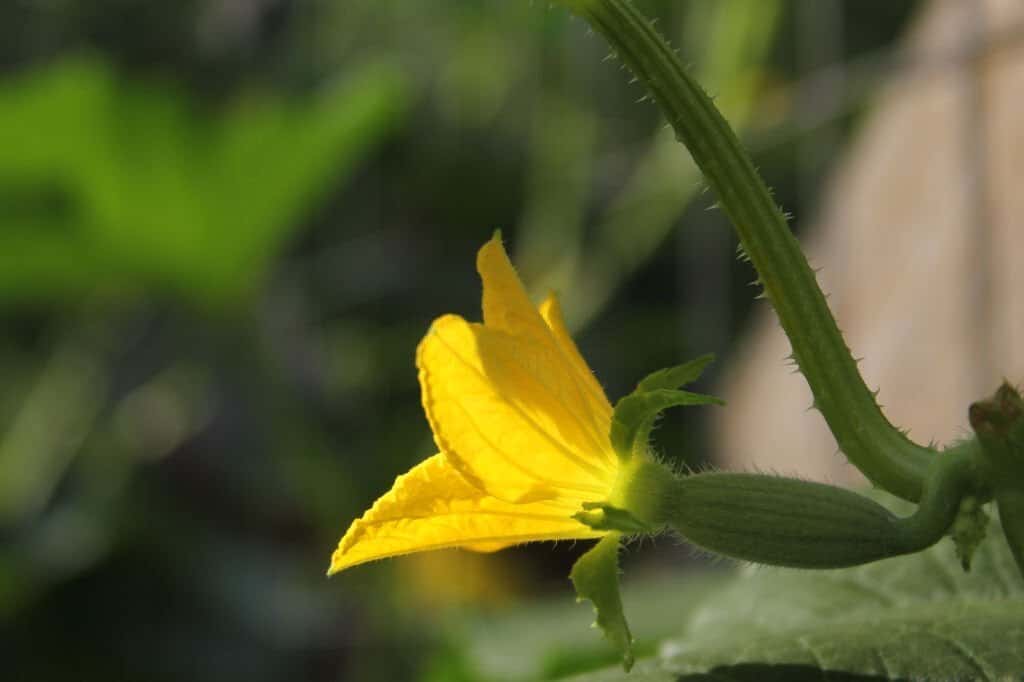
If you’re planting cantaloupes for the first time, don’t worry if the first flowers fall off the vines without producing fruit. During this cantaloupe flowering early stage, the male flowers on these annual plants have only one function: to produce pollen, which will fertilize the female flowers. A day or two after they bloom, they detach and fall off from the plants naturally.
If the female flowers start to open ten to fourteen days later, and if they are properly pollinated, they develop into fruit. Several things, like the weather, can stop pollination and cause the female flowers to fall off without making any fruit.
So, male cantaloupe flowers naturally fall off the plant. But if female flowers are not pollinated by the male blooms, they could fall off and not develop into fruit.
This article will walk you through all the things you need to know to understand why all your cantaloupe flowers are falling off. In addition, you will understand several factors that may be causing this failing cantaloupe pollination.
Cantaloupe Flowers Purposes
When you see a cantaloupe flower, it’s hard to believe that something so beautiful could come from such an ugly fruit plant. But the cantaloupe flower has a very specific purpose: pollination.
The flowers are very fragrant, and their nectar is very sweet, which makes them attractive to bees and other pollinators. The pollen from the flowers is carried by the pollinators to other cantaloupes, where it fertilizes the ovules and allows the fruit to develop. Without the cantaloupe flowers, there would be no cantaloupes!
| INFO |
|---|
| Did you know that the flowers of cantaloupe are edible? The petals are crunchy and have a mild, sweet flavor. They can be eaten fresh or used in salads, as well as in desserts and cocktails. Cantaloupe flowers are also used in traditional medicine to treat fevers, colds, and other illnesses. |
The Difference Between Male and Female Cantaloupe Flowers
The male and female cantaloupe flowers are different in appearance and function. The male flower has a long, thin stalk with a large, round stamen at the end. The stamen is covered in pollen.
The female flower has a short, thick stalk with a small, cone-shaped stigma at the top. The stigma is covered in sticky sap that traps pollen from the male flowers.
The complete flowers are distinguished by the knot-like appearance of the immature fruit underneath the blossom.
Pollination is a process that is vital to the reproduction of flowering plants. Pollen grains are transferred from the male organ, or stamen, to the female organ, or pistil, of a flower.
If pollination does not occur, the plant will not produce fruit. This can be due to a number of factors, such as lack of bees, rain, wind, or other pollinators. Without fruit set, the plant’s whole flowering cycle will end and it will not reproduce.
Why Are My Cantaloupe Flowers Falling Off?
Pollination is the process of transferring pollen from the anthers of a flower to the stigma of another flower. Pollen is necessary for fertilization to take place and for the development of fruit.
Upon successful pollination, this portion of the plant expands and transforms into a fruit. Male flowers will wilt and lose their petals.
If pollination is unsuccessful, it is common for the fruit to appear to expand and increase before turning brown and falling off after a few weeks.
So here are some reasons why cantaloupe flowers fall off because no pollination occurs:
- Weather Conditions
Weather conditions are important for pollination of cantaloupes. The optimum weather conditions for pollination are temperatures between 65 and 85 degrees Fahrenheit and humidity levels between 70% and 80%.
The right weather is essential for pollinating cantaloupe flowers. Pollen becomes sticky and difficult to spread in the air when the humidity is too high.
Wind speeds should be less than 10 mph. Rainy or cloudy weather can reduce pollination rates. When the weather is chilly and gloomy, honeybees, the only pollinators of watermelon blooms, are unable to fly.
- Insecticides
There are short windows of successful cantaloupe flower pollination. Cantaloupe flowers only open for one day, and the female cantaloupe blossom is only susceptible to pollen between 9 a.m. and 4 p.m. Effective pollination has a higher success rate if you promote honeybees through companion planting.
So try not to use insecticides on cantaloupe plants and the companion plants that grow near them, especially during the day when honeybees are flying. Some inseticides have a 24-hour or longer.
- Nutrient Imbalance
When plants get too much nitrogen, they make mostly leaves and stems. The plant will be big and usually very green and healthy, but it will have few or no flowers. When the flowers start blooming, they may be prone to falling off.
Deficits in some nutrients might lead to poor pollination or decreased flower yield. Excess nutrients, on the other hand, might be detrimental to plant development.
When phosphorus levels are too high in the soil, plants are unable to absorb many micronutrients, including iron, which is essential for flowering. A lack of boron may cause insufficient pollination. Inadequate boron has an impact on pollen quality, pistil development (a feature of the female flower), and pollen tube length.
How to Prevent Cantaloupe Flowers from Falling Off
On most cantaloupe varieties, each vine will sustain two to three cantaloupes. It is possible that you may need to remove flowers since you don’t need all of them. If you choose to grow only one or two fruits on each vine, they will grow bigger and taste better because they will get all the plant’s energy.
There are a few things you can do to prevent cantaloupe flowers from falling off. These consist of:
- Hand Pollinate
Use a male flower, without the petals, to make contact with the female flower’s pistil by inserting the stamen inside the female flower. To establish contact with the pistil on the female, brush and shake the pollen. To manually pollinate the melon plants, you may also use a little paintbrush.
- Add Honeybee Colonies and Pollinators
Early in the morning is when bees typically pollinate. They don’t move as far from the hive on chilly or damp days as they do on sunny, warm days. Locate hives as close as possible to the garden and put a number of blooming plants in and around the garden too. You could also get pollination from bumblebees.
- Replace Insecticides
Another possibility for why the bees aren’t pollinating your cantaloupes is that pesticide use in your area has wiped off the bee population. Replace any toxic pesticides you use in your garden with natural, bee-friendly alternatives, and encourage your neighbors to do the same.
- Add Fertilizer
When the plant’s buds start to form, give it some fertilizer. This strengthens the blossoms and may encourage them to cling on the vine for an additional day or so as they await pollination. The best flowers come from strong vines.
- Good Seeds or Transplants
To start your cantaloup plants, only use good quality seeds from top-notch varieties. You may also want the same if you plant from the transplants. Get and grow a disease-resistant cultivar if at all feasible.
Final Thoughts
In conclusion, cantaloupe flowers falling off is a common problem that can be caused by a variety of factors. If your flowers are falling off, try to determine the cause and take corrective action. With a little bit of care, your cantaloupe flowers should be healthy and beautiful!

